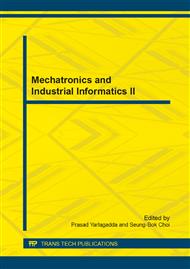p.234
p.241
p.245
p.251
p.259
p.263
p.271
p.276
p.280
A Evaluation Model for Valid Prediction of Cabs’ Number Change from Urban Cabs Trajectories
Abstract:
the large scale urban cabs trajectories are used for prediction of cabs number change in some applications such as knowledge discovery and abnormal traffic alarm. The traditional methods calculate for many invalid spaces consume much time on invalid calculation. After observing many datasets with the great number of cabs trajectories points, we find a rule that the periodicity and stabilization of cabs group number change will be clearer as the number of cabs trajectories points increasing in some space, and the prediction accurate of cabs number change is also have relationship with the periodicity and stabilization. To validate this rule, we first model the periodicity and stabilization of cabs group number change. And a function is found to well fit the model value as the change of cabs group number, proving the rule we have found. Finally, we show that how this rule can be used to decrease the calculation time of valid traffic prediction. Experiment shows that the rule we discovered exists in Beijing and San Francisco datasets and the rule can conveniently and efficiently used to valid traffic prediction.
Info:
Periodical:
Pages:
259-262
Citation:
Online since:
July 2014
Authors:
Keywords:
Price:
Сopyright:
© 2014 Trans Tech Publications Ltd. All Rights Reserved
Share:
Citation:


